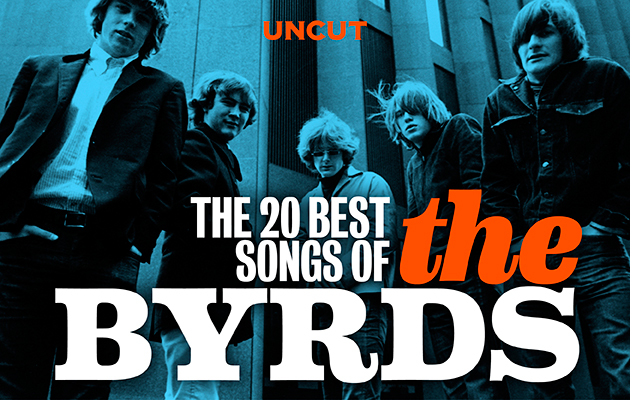5 5D (FIFTH DIMENSION)
From Fifth Dimension (July 1966). Single June 1966. US chart: 44
After Gene Clark’s departure, McGuinn’s musing on the infinite beyond was augmented by a young Van Dyke Parks on organ, instructed to “think Bach”.
VAN DYKE PARKS: These illuminated and self-examined lyrics to “5D” codified, in a capsule, the spiritual quest of ‘The ’60s’. When I first heard them, having been invited to the studio recording, I remember feeling fortunate to sit in on a session that would reveal that quest, and The Byrds’ sober social role in it. It reveals a spiritual awakening unburdened by any religious dogma. Cutting-edge in the counterculture. The 3/4 format was a squaresville retro-recall to the waltz, so out of place post-twist, or any other dance step of the era. That spoke to the author’s non-commercial intent, which was something I could admire. [Previous Byrds producer] Terry Melcher and the fellows knew I could play keyboard. Terry asked me if I could play Hammond B3. “In my sleep!” I lied. I’d never even touched one. Yet playing on the date was a benchmark in my life. It also brought me local renown as a studio player and helped me make ends meet. And I’m ever grateful for it. I’d passed up on a hustle to be a Byrd, yet I admired them so. They had the potential to be the great American defenders in the onslaught of the British Invasion. Their first album accomplished that and solidified Southern California as a hotbed of alternatives to the Brits, in their obsession to sell us the Delta Blues.
_______________________
4 SO YOU WANT TO BE A ROCK’N’ROLL STAR
From Younger Than Yesterday (February 1967). Single January 1967. US chart: 29
Loosely aimed at The Monkees, this crackling, hard-edged pop classic takes a satirical swipe at fame. Features Hugh Masekela on trumpet and screams recorded at a Byrds gig in Bournemouth.
TY SEGALL: I grew up in Southern California and The Byrds were one of those bands who were always on the oldies radio station. When I was a little kid I think I heard their version of “Mr Tambourine Man” before I’d even heard Dylan’s. It was only later when I understood the importance of that cover and what they were trying to do with it. It seemed like The Byrds were always around with that song, then you start to discover just how great they were as the years go by and you start hearing them properly. The one that always stood out for me was “So You Want To Be A Rock’n’Roll Star”. I guess the older I get the more I understand people who have success and how there’s always a flipside to the positivity of it all. I think The Byrds had that, too. The best kind of music is the kind that puts you in a different place to your everyday life. I’m not the biggest folk music guy, but the reason my ear went towards psychedelia was because it was a form of escapism. The Byrds definitely had that. And I remember hearing “So You Want To Be A Rock’n’Roll Star” as a little kid and going: “Yeah. Yeah! I do, I do!” I’d pick up my guitar and try to play it. It’s just one of those tunes that’s always been a classic Byrds song. The 12-string guitar, the harmonies and the production elements of The Byrds have all fed into my own songs. The way they did it created this whole different world. That’s why I love their music. It’s all those elements sewn together.
_______________________
3 TURN! TURN! TURN!
From Turn! Turn! Turn! (December 1965). Single October 1965. US chart: 1. UK chart: 26
Pete Seeger’s evergreen folk tune, itself adapted from the Book of Ecclesiastes, recast as a stirring anthem for the bright new ’60s counterculture.
SID GRIFFIN, The Coal Porters: Never mind my favourite Byrds song, I actually think that “Turn! Turn! Turn!” may be my favourite song, period. One, it’s a great song and great performance. The legend is that they went through something like 77 takes over a few days. I don’t know whether that’s true, but I like the fact that this was a band playing more or less live in the studio to get the song to perfection. Second, if it dates from The Bible, it’s arguably the oldest lyric in the history of rock’n’roll. Third, there’s a saying we used to have with the guys from Green On Red: if a song’s good you really can’t screw it up. “Turn! Turn! Turn!” has been done by Pete Seeger on his banjo, the man who wrote it and put it together, and it’s been done by Judy Collins, with – irony of ironies – a young Jim McGuinn on guitar. There’s also a very pretty straight folk version by Joan Baez. And it’s been done by The Byrds in a great rock’n’roll version. So it’s a song that can stand up in numerous multiple versions.
The fourth reason is probably the most important for me. As much as any song out there, “Turn! Turn! Turn!” encapsulates a beautiful moment of the ’60s. I was just a kid then and I always think of something good, warm, bright, positive and powerful. It represents that glorious moment when The Beatles had broken through, yet we hadn’t got to that point in ’68 when Robert Kennedy and Martin Luther King were shot. It represents that high watermark, that four-year period when it looked like it was not only possible to change the world through pop music and the ideas of youth on the march, it looked like it was going to happen. Everytime I hear “Turn! Turn! Turn!” I think of this high-water mark when it looked like things really were going to change on the strength of youthful idealism, soundtracked by electric rock’n’roll.


